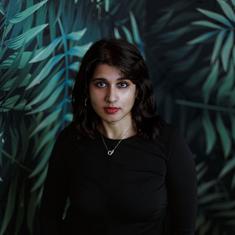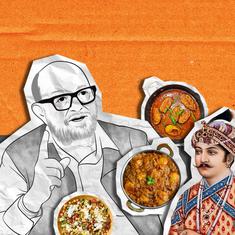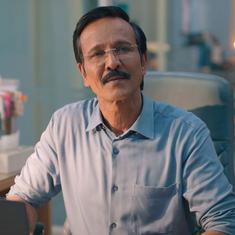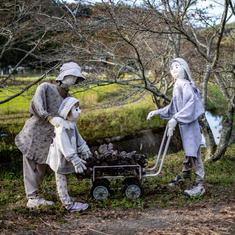In her book, Famous Last Questions, author Sanjana Ramachandran confesses she has two selves: the “insane” self that lives at home and the “sane” self that exists outside it. This insanity is a cocktail of grief, anger, loathing, and regret – and it has been allowed to fester and mature for all of her life. Of course, her parents are to be blamed for it, her father, especially. She recalls his violent bursts of anger, his unacceptance of his daughter’s individuality, his sly misogyny, and most regrettably, his unwillingness to want to be better.
The good and the bad times
The stifling atmosphere at home during childhood is in sharp contrast to the rapidly expanding world outside. For every 90s child, including Ramachandran, the 2000s were a time of great excitement and possibilities. (This was perhaps true for everyone irrespective of their age.) There were the fledgling days of social media, American pop culture was televised, the recent liberalisation made capitalism look promising, and there was a growing understanding among savarnas that caste was evil as opposed to a simple social hierarchy that many had been conditioned to believe. As Ramachandran rightly observes, this generation was the second or third to enjoy the fruits of independence and yet, unlike their predecessors, they existed in a world that was getting more confusing by the day.
Ramachandran considers her place in the shifting world order as a “Hindu Brahmin Indian woman”. Though the strategic placement of the words should guarantee some degree of ease in navigating public and personal life, Ramachandran argues that for most Indian women, it’s a lose-lose situation. And Hindu Brahmin women, who inadvertently uphold and enforce caste norms, are not better protected against patriarchal violence than their lower-caste sisters.
In this argument, she makes a fine case for the dubiousness of “merit” and how it is artificially constructed through intimidation and coercion, and gives rise to lifelong victimhood and an inferiority complex. While her father belittled her mother’s intelligence and refused to take her seriously (even when she was the sole breadwinner of the family), he impressed upon his daughter the importance of education and independence. Added to this was his Brahmin pride that quietly perpetuated the falsehood that their caste valued knowledge above all else. So while Ramachandran competed for best grades, slogged away for a seat in India’s best institutions, and even put on the “cool girl” act to fit in male-dominated spaces, she knew her heart was not in it. Achieving her parents’ dream wasn’t enough: she had coveted degrees and a good job, and yet her father did not treat her like an adult and her mother still wanted more.
Despite an unhappy marriage (which leads to a torn eardrum), Ramachandran’s mother is keen for her daughter to marry. This feeling is shared by her grandmother, who makes matters worse by emotionally blackmailing her and being unthinkingly (or thinkingly) misogynistic. Ramachandran insists she isn’t prepared. Moreover, she has no role models in this department and yet, despite the obvious grief of her own marriage, being single past one’s prime is simply unacceptable to her mother. It is not only a conditioning of her times, but also caste – a Brahmin woman isn’t supposed to remain unpaired, the family’s honour resides in her womb and it is too precious to go to waste. Irrespective of the collective progress women have made over the years, the one thing that they are simply unable to win against is Caste. Ramachandran knows that even in “love marriages”, endogamy is king. And competitive exams and demanding jobs leave young Indians with little energy to defy norms.
A haze of memories
Ramachandran writes about her own rebel phase like it were the most natural thing to happen. And indeed it was. The freedom of the new millennium was for everyone to enjoy. To aid this was Bollywood, alongside the Internet. Ramachandran grew up during a time when Bollywood could still create big cultural moments and influence trends. The most notorious of which was Kareena Kapoor’s size-zero figure for the 2008 dud, Tashan. The movie was a flop at the box office but the frenzy of the size-zero era is felt to this day. All of this seems quite silly in retrospect, but Ramachandran considers how it worsened body image issues among Indian women, including young girls such as herself. Here, too, this becomes a gateway into examining the national preoccupation with women’s bodies and how class and caste figure into the politics of fashion and appearance.
In her memoir-cum-reportage, Ramachandran reinforces the humbling realisation: “I’m special, not unique.” Her knife cuts deep into her emotional wounds, and while the grief of her personal life is debilitating, what is worse is carrying it around. Her reckoning with faith and spirituality (Buddhism, in this case) was especially fascinating to read. She takes Vipassana seriously and leans into it to let go. Faith, regardless of its many shortcomings, becomes a helpful refuge when nothing else seems to work.
Frankly speaking, Ramachandran has guts. It’s not easy to write about how much you despise your parents or speak freely of the hurt they have caused you. (She calls them “devourers” at one point.) In fact, it’s terribly difficult to even admit it to yourself. (Finally, a truth that is universally acknowledged.) The shame of failing to love your parents is perhaps greater than the shame of being a failed parent, and it is uniquely heartbreaking to step away from the toxicity and acknowledge that you have been hurting too. She is witty when she looks back on those difficult years, but the pain hides in plain sight. Thankfully for the reader, Ramachandran doesn’t attempt to downplay the seriousness of the mess that she (and other Indian millennials) has landed in. Famous Last Questions does not offer famous last answers. It appears as though Ramachandran still has a long way to go – but she is beginning to see that her parents loved her in their own, broken ways, that they too were victims of repressive regimes and a lifelong curse of shame and guilt. If there’s one way out of this madness, it is perhaps to let the small things go.
What the book did for me was unravel my own memories – my dual life during my teenage years, the lies I have told over the years to spare my parents from truly knowing me, the hypocrisy of my father’s “feminism”, my mother’s eagerness to see me married while ruing it unproductive… And of course, the severe disgust I felt about my body as a 12-year-old when I saw a skinny Kareena Kapoor in sparkling swimsuits.
It is not easy to see some of your most private indignities reflected in a stranger’s memoir. Read it at your own risk.
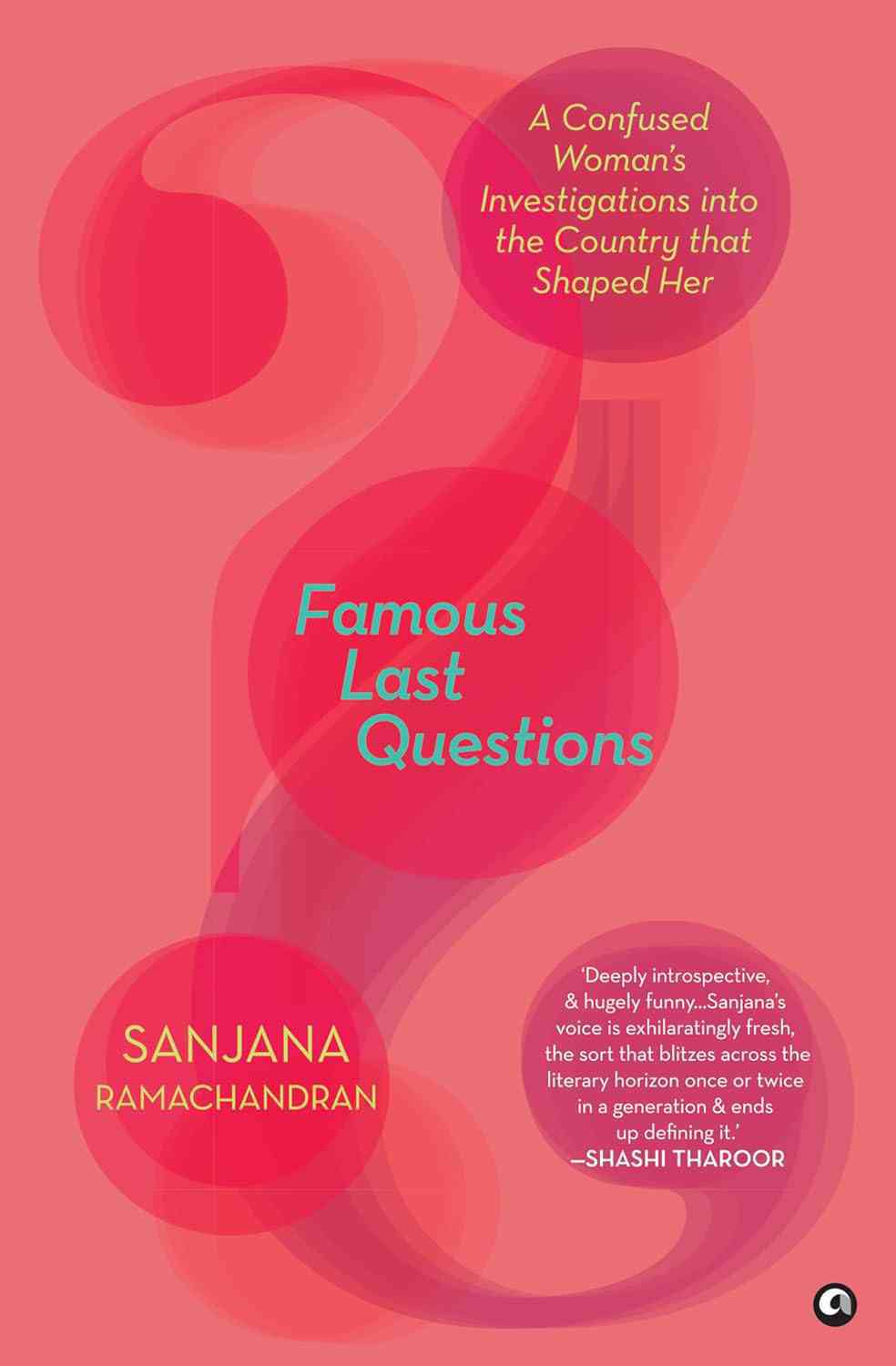
Famous Last Questions: A Confused Woman’s Investigations into the Country that Shaped Her, Sanjana Ramachandran, Aleph Book Company.



